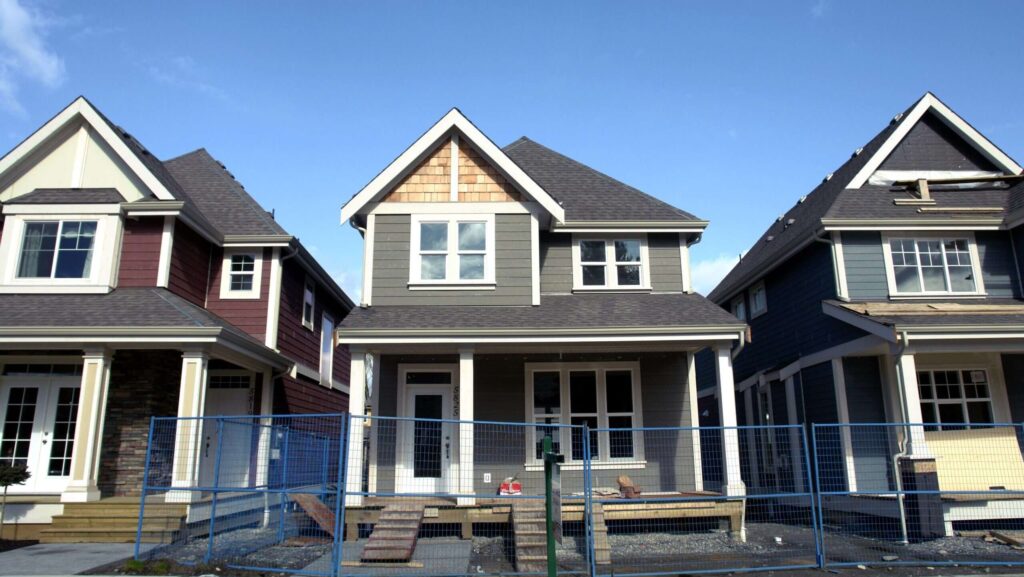This is a vicious cycle for you. Rising housing costs lead to inflation, prompting the Federal Reserve to raise interest rates. Higher interest rates make mortgages more expensive, exacerbating the housing affordability crisis. Doubling down on measures that could deepen this predicament is the worst thing the Biden administration can do to stop this cycle, but that’s exactly what it’s doing.
The house price is rise Many analysts believe that annual growth of 5.8% predict Keep upgrading.However, the government and leading Democratic lawmakers want to implement International Energy Conservation Codewhich will require new homes to meet more stringent energy efficiency standards, from more insulation to high-tech thermostats to more advanced HVAC systems, as well as new testing and certification requirements.
States and cities have traditionally set building codes, but the federal government has been pushing for these new standards, funded by a $1 billion Inflation Reduction Act grant to train and hire code enforcers. Sen. Jeanne Shaheen (D-New Hampshire) and other lawmakers also joined the push, claim The new rules could significantly reduce energy bills for homeowners and renters.
Some Republicans pushed back.In North Carolina, the state House and Senate recently cover Gov. Roy Cooper cast a veto and delayed implementation of any new energy regulations until 2031.
There is no denying that energy efficiency regulations increase construction costs.according to a study According to the National Association of Home Builders, these regulations will add $3,000 to $12,000 to the cost of a typical home, depending on the location and efficiency options chosen. U.S. Department of Energy (DOE) discount A more conservative estimate puts the additional cost for a single-family home at between $1,000 and $4,000.
Supporters of the code claim these costs will be offset by lower energy bills. But even the U.S. Department of Energy acknowledges that some projects in the new regulations may require longer payback periods. According to the agency’s own data, continuous wall insulation costs up to $2,000 to install and can save 2.7 to 3 percent of energy in a reference home. That means the payback period is over 30 years – and that’s if you pay cash. Most people finance their homes, and interest rates are high right now. Calculated at an interest rate of 7.9%, the investment payback period can reach 90 years. With wait times so long, homeowners may prefer to opt out. But mandatory energy regulations do not allow for this discretion.
Eight states currently do not enforce any energy regulations at all, only Nevada and New Jersey The 2021 Residential Building Code has been fully adopted across the state. If something really makes economic sense, it doesn’t need to be enforced. Builders are already marketing energy efficiency improvements, and many homeowners are adopting them voluntarily, even going beyond code requirements.
Additionally, energy efficiency improvements have become a trend even in states with the fewest regulations. Houses built since 2000, despite being on average 30% larger than older homes and equipped with more appliances, consume only Energy increased by 2% and is Dramatically improved efficiency per square foot More homes than were built decades ago. Energy codes should be a voluntary guide for homeowners and businesses.
A new code Currently in development, lobbyists Electrical appliances and plastic Vendors are already lining up behind the scenes. There is certainly political logic to Democrats helping one of their special interests, but there are also political risks. It’s one thing to spend future generations’ tax dollars; it’s another to make it more costly to police current voters and potential homeowners.
According to data from the Federal Reserve Bank of New York housing survey, homeowners and renters are increasingly pessimistic about their chances of getting a mortgage or refinancing. To make matters worse, renters’ self-assessed likelihood of owning a home dropped to 40.1%, the lowest result since the survey began in 2014.
The federal government can take many steps to reduce housing costs, from cutting supply tariffs to ending subsidies that drive up prices. Focusing on these options is both politically smart and better policy than imposing new regulations that make the situation worse.

